Title Sequence
[0.10] Series Title Sequence
New Teacher Survival Guide
Music cue
Program Title:
ADHD in the Classroom
ACT 1 : THE CHALLENGES OF TEACHING STUDENTS WITH ADHD
Beat 1: Intro to James and his class
- Shot sportsfield with students joking around
- students walking into the school from sportsfield
- James entering the school /
- James walking through the hallway JAMES MCKINSTRY USED TO BE A BANKER.
INTV James
Lower third:
James McKinstry
3rd year teacher
I was very good at finance, and helping people make money and make sound investments. But at the same time, I wanted to also help children.
Shot of James in the hallway, talking to a student and greeting students passing by. JAMES SWITCHED CAREERS AND IS NOW A SPECIAL EDUCATION TEACHER AT THE JOHN DODD MIDDLE SCHOOL IN FREEPORT, LONG ISLAND.
shot: peak through the door of James'classroom from the hallway. OT: James: come on – sit up, follow along.
- Shots his students / cu’s of kids in class
- Wider shot of the classroom
HE TEACHES MATH AND ENGLISH TO FIFTEEN 7th GRADERS –
FIVE OF HIS STUDENTS HAVE ATTENTION DEFICIT HYPERACTIVITY DISORDER – ALSO KNOWN AS ADHD.
James INTV
James: Every day is a challenge ..you get presented with different situations.
INTV James
See students with their mobile phone,
students walking around
shot of one kid dancing in front of camera
See Toni acting out
There’s a lot of different personalities going on in there. There's a lot of different needs that I have to fulfill..
See CU of hand-tapping and kids squirming. STUDENTS WITH ADHD OFTEN HAVE TROUBLE REMAINING FOCUSED IN THE CLASSROOM AND CAN BE BE OVER-ACTIVE, INATTENTIVE, AND IMPUSIVE.
INTV James Their attention span is very very short.
James: I can’t have lessons go too long on certain topics, because otherwise they will loose interest, very quickly.
ACT 2
See wide shot of Pam walking towards school.
Shot Pamela shake hands with James. TODAY, PAMELA MILAZZO HAS COME TO OBSERVE JAMES' CLASSROOM.
Soundup:
Pam: hey James I am pam Milazzo, nice to meet you.
See Pam and James in the conference room
PAM IS AN ADHD EXPERT.
Soundup Pam:
Tell me a little bit about the make up of your class ..
IT’S A CONDITION SHE KNOWS WELL -- SHE’S BEEN DIAGNOSED WITH ADHD HERSELF.
INTV Pamela:
ADHD is really an under stimulation of the brain. The parts of the brain that enable you to basically block everything out and pay attention to what you need to pay attention to, that part of the brain isn’t working.
JAMES IS LOOKING FOR ADVICE IMPROVING IN CLASS TRANSITIONS – AND ON KEEPING HIS STUDENTS ENGAGED AND ON POINT.
Soundup James:
Shhh, guys the notebooks should be open we should be writing down, ok, what's on the board..
INTV James INTV JAMES
Some of the struggles I am having is the transitioning from one part of the lesson to the next, trying to make it a little bit more of a smooth transition.
SEE JAMES EVERY DAY, JAMES BEGINS CLASS WITH A DO-NOW.
See girl raise her hand. James: OK, For your do-now, in your notebooks that are coming around, what is one legend that you have heard of? And if you’ve not heard a legend before, please describe what the definition means to you in two or three sentences.
Pam: I loved your “do now.” I thought that was great.
AFTERWARDS, PAM MEETS WITH JAMES TO TALK ABOUT THE CLASS.
See James in front of the Power Point. Pam: It was a power point presentation, you didn’t have to sit there and write it on the board the old fashioned way and they were sitting there and waiting .. And you kept it up there so they could refer to it.
Graphic: Tip
Give clear directions so students know what is required of them.
Soundup James;
I want you to think of this on your own..
Yes Kenny.
Do not give an example... don’t give an answer...
Pam:
One of the things I would suggest You want to make sure that before they actually get into the assignment, they know exactly what’s required of them.
If you don’t want them to raise their hand and answer the question then there should be, there should be a clear direction that I’m going to ask this question then when you finish I want you to place your answer in the workbook.
See shot of James in the classroom
FOLLOWING THE 'DO-NOW', JAMES TRANSITIONS TO HIS MAIN LESSON – UNDERSTANDING FICTION.
See kids chatting, loud, tapping, sleepy
James: Ok guys, we’re going to start in now... allright,, like we’ve been talking about, this unit is going to be about fiction. We're going to review a little bit and Mrs Decker and Mrs Smart will hand out the notebooks.
See shot of aids walking around handing notebooks TWO TEACHING ASSISTANTS HELP OUT, BUT JAMES STILL STRUGGLES TO GET ALL HIS STUDENTS FOCUSED ON THE NEW TOPIC.
TRANSITIONS CAN BE PARTICULARLY CHALLENGING FOR STUDENTS WITH ADHD
INTV Pamela Pamela: When you are transitioning, we tend to think of this as one thing that they’re doing, but in fact there are a number of bits of information that they have to remember as they are transitioning from one thing to another.
(45:10). What materials do you need to put away, what materials do you need to take out? What supplies do you need? Where are you going to put your homework?
PAM SUGGESTS THAT VISUAL CUES CAN KEEP STUDENTS ON TRACK DURING TRANSITIONS.
Graphic: TIP 2
Provide checklists and other visual cues to remind students of classroom routines.
Pamela: They can actually be given a small slip of paper at the beginning of class that serves as a checklist, that can be on the desk.
You can also use a larger sign on the desk that is a permanent thing that they are referring to.
They’ve got a cue, in order to follow the beginning of the classroom routine.
42B_JamesClass_JPDiscuss ONCE STUDENTS HAVE TRANSITIONED INTO THE LESSON, THE NEXT CHALLENGE IS KEEPING THEM FOCUSED.
SEE JAMES IN CLASSROOM – KIDS LOOSING FOCUS.
Soundup James:
What?
Why what is he doing to you? Does he ever stop talking? Ok. Ruben..
ANOTHER WAY TO KEEP STUDENTS ON TASK IS TO USE A TIMER.
Graphic: Tip
Use a timer to motivate students
Pamela: Have you seen these? This is a timer.
McKinstry: Yeah, actually I use something like this in quite a few of my lessons for on the smart board.
Pamela: If you’re going to give them say three minutes, five minutes, whatever it is. What you can do with the time timer, which is so nice, is it’s showing them in red how much five minutes means. They’re able to see that time moving backwards. OK? For some students it’s kind of like a beat the clock type of a thing.
James: I have done the timer, it does work, and I need to infuse it a little bit more, but I try not to pressure the students. I try to have as little pressure in the environment as possible.
Pamela: ...but ,the right amount of pressure will actually cause that adreneline to start going, and boom, they will start to focus and pay attention.
TEACHERS SHOULD ALWAYS BE PREPARED FOR UNEXPECTED DISRUPTIONS.
See Toni coming into the classroom, frustrated
James
James: Toni have a seat…sit down.. I know just sit down,
Toni: Stay out of my life.
James: Ok, Toni. We’re gong to write the do now. Look at the do-now on the board.
James: I know the students all have some issues going on. Its all about maturity and looking at it from the point of view of the students.. They are not maliciously trying to do that to me. Anything negative that they are doing. It's just their behaviors. You can’t take it personally.
STUDENTS WITH ADHD CAN GET FRUSTRATED EASILY – AND MAY NEED HELP GETTING BACK ON TRACK
Actuality:
James: look how good this is. You see this? You see how well you wrote this? Good. You see how well you wrote that?
Pamela: I would like to talk about the situation that occurred with the student in class. You did that brilliantly. I don't know that there was much else that you could have done in that classroom setting.
James: What I just try to do is refocus that student back on to task. And that’s my approach for all the students. Just a gentle redirection. Mostly agreeing with what they are saying – and a lot of the times it won’t even make sense to the student what they are saying. But I think just being supportive and positive in those situations means a lot more to them – knowing that you’re there for them – rather than that you are going to punish them. Or they are going to get in trouble.
STUDENTS CAN BE REDIRECTED IN MANY WAYS.
Actuality
Soundup.
James: I see a smile....
Is that why you're smiling?
INTV PAM
Pamela:... the idea here is to create strategies that work for that particular student.
ONE WAY TO FIND OUT WHAT WORKS FOR INDIVIDUAL STUDENTS – IS TO ASK THEM.
Graphic: Tip
Ask students what works for them
INTV Pam ..take a few minutes and have a discussion with the class. You ask a couple of questions of what’s going on.
What are the things that are making it challenging for you to pay attention right now?
What kinds of things have you used to help redirect yourself back to the class so the students are sharing with one another.
McKinstry: in a way I feel a little guilty because we’re not covering the curriculum at that point. But in turn, they need that redirection back on themselves so that they can sort of internalize and see where their problems may lie with paying attention.
Pamela: OK. You have a wonderful relationship with these kids and a great class. Thank you.
ACT 3 : IMPLEMENTATION
Beat 2
Schot of school
See James in classroom, students coming in A FEW DAYS LATER, JAMES TRIES OUT SOME OF PAM’S SUGGESTIONS.
See James in front of the powerpoint HE USES BOTH VERBAL AND WRITTEN CUES WHEN GIVING INSTRUCTIONS.
See James in front of the powerpoint James: Actuality:
James:What I want you to do is, what are two types of non- fiction. Give examples of each.
INTV James
James: Cueing is very effective, because it it allows me to interject what we’re going to get to, before we actually do it. So it gives the students a little foresight in what the lesson is going to be about, so it's sparking that interest.
Actuality:
James: Now that you have examples written down from the other slide, it should be much easier for you to do this.
See shot of James setting up the timer JAMES ALSO USES A TIMER.
James: I want each of you to be done before the timer hits zero. I'm going to give you about three minutes, three and a half minutes.
CU timer
INTV James James: The advice that Pam gave me was very very good. It worked extremely well to put the timer on the board.
She recommended that I put a timer on the do now...
See timer counting down
See students working focuses James:
Along with the timer I kind of infused my own strategy of now playing a game with them. Saying, we have to be done when a certain time is up. Because, you can' really just leave a timer up there and say this is your time, and not make it competitive for the students. They need to have something to work for.
See and hear school bell.
Students leave the classroom and blend in with other students in the hallway
Actuality:
James: Ok see you later guys!
INTV James
See kids coming out of the door in the hall way
James. I am extremely proud of the students. And I feel that this population has the ability, just as all students do, to overcome the challenges that are put in front of them, with the right support and right teaching.
TAKAWAY RECAP Give clear directions so students know what is required of them.
Provide checklists and other visual cues for classroom procedures.
Use a timer to motivate students.
Ask students what works for them.
CREDIT SEQUENCE


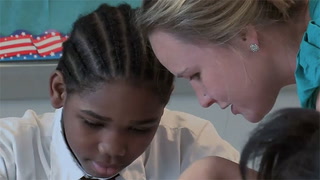
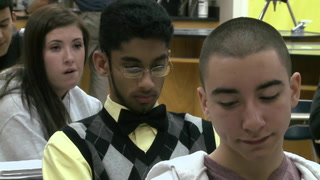

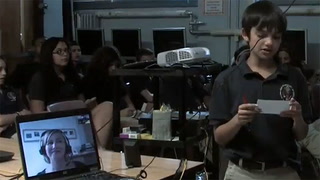
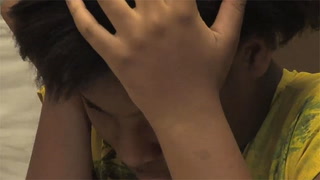
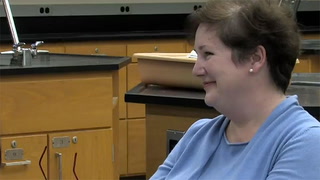
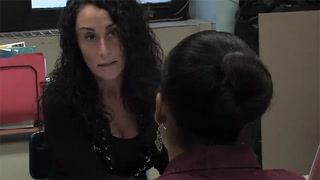








202 Comments
Zina Robinson Jan 24, 2024 11:24pm
1. How can checklists and visual cues help students stay on task?
Using checklists and visual cues helps the students to stay focused and give them insight on what is expected in their daily routine.
2. Have you tried the strategy of asking students what works for them and what challenges cause them to be distracted?
Being a Special Education Inclusion teacher, I have used several strategies to make the attempt to keep my students focused on their learning with the understanding that every student's learning ability is different. The students I teach don't like to be asked questions in front of other students that don't understand their disabilities. When I notice that my students’ are not focusing, pass out little sticky notes and ask each of my students to write down one or two reasons that keep them from staying focused in class. I noticed that most of them stated that they are bored by the regular education teacher and the way he/she teaches. Because I am an Inclusion Teacher, it limits my ability of what I can do inside another teacher's classroom. Most of my student’s has only push in minutes and pull out for testing time. My students and I have great communication with my students when it comes to getting a clear understanding on what makes them stay focused in class.
3. How does the use of a timer help motivate students and help them focus?
The use of a timer helps the students to focus because it gives them knowledge of the amount of time they have to finish their lesson. It can also be used as an incentive to see who can finish their assignment the fastest by having a reward in place.
Bridgette Williams Dec 29, 2023 2:34pm
Avinus Calloway Oct 11, 2023 6:16pm
1. How can checklist and visual cues help students stay on task? Visual cues help keep the students on track and help them to follow the lesson, the do now list at the beginning of the class gives direction to them when they enter the room and help to settle them down and focus for the main lesson, the checklist can be placed on each student desk and as he/she finishes that task put a check mark beside that task so they know how far they have progressed for the day in the lesson and what still remains to be done in the lesson.
2. Have you tried the strategy of asking students what works for them and what challenges causes them to be distracted? In physical education they is a lot of social interaction, therefore different personalities are at play and I do have to ask s what is the problem, why is this a problem, and what can we do to solve this problem in a way that each student feels that have been successfully heard.
3. How does the use of a timer help motivate students? The use of a timer helps motivates a student by allowing them to know how fast or slow they need to work in order to finish the task, it also put the right amount of pressure on those students to not only get it done quickly, but get it done correctly.
Sharon Green Sep 22, 2023 2:31pm
1. Checklists and visual cues can keep thestudents on trask. It can also break things down into smaller pieces so that it's not just one huge thing that may overwhelm them. At the same time, it can convey clear and percise directions so that they know what is expected of them. It can exhibit what is coming next so they have a "roadmap" to help them get where they need to go.
2. No, I have not tried asking students what works for them and what is distracting them. I have tried re-directing them. In the future, I will add that to my lists of things to try when I have a distracted student.
3. A timer can help the students by showing them how much time they have to complete an assignment. It can "apply just the right amount of pressure" to get the students motivated and moving toward their goals. When they can see how much time is left, maybe they can focus on just the assignment and block out other stuff that maybe floating around in their heads.
Sharon Green
DeAnna Granger Sep 2, 2023 2:19pm